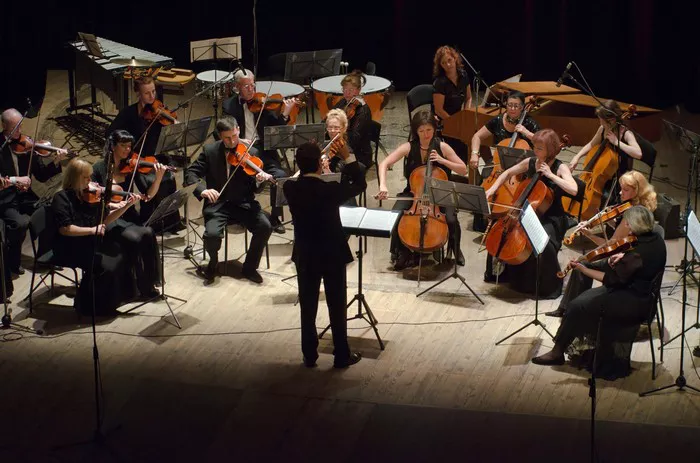Franz Schubert, often hailed as one of the most significant composers of the Romantic era, left behind a rich legacy of musical treasures, among which his symphonies stand out prominently. While his symphonic output may not be as vast as that of some of his contemporaries like Beethoven or Brahms, Schubert’s symphonies are revered for their melodic beauty, emotional depth, and innovative harmonic language. Among these symphonic works, Schubert’s Symphony No. 8 in B minor, commonly known as the “Unfinished Symphony,” holds a special place, captivating audiences and musicians alike with its enigmatic allure.
Unveiling the Enigma: Schubert’s Unfinished Symphony
Completed in 1822, Schubert’s Symphony No. 8 remains one of the most intriguing and debated works in the classical repertoire. The epithet “Unfinished” stems from the fact that Schubert composed only two movements of what was intended to be a full-scale symphony. Despite its incomplete state, the symphony has garnered immense admiration for its profound musical ideas, expressive power, and the tantalizing mystery surrounding its unfinished nature.
The first movement, marked Allegro moderato, opens with a brooding introduction, where the cellos and bassoons present a dark, melancholic theme, immediately setting a somber and introspective mood. This theme, with its descending chromatic lines, is characteristic of Schubert’s penchant for exploring complex harmonic progressions and emotional depth. As the movement unfolds, Schubert weaves a tapestry of contrasting themes, alternating between moments of turbulence and lyricism. The development section is particularly striking, with its dramatic shifts in dynamics and harmonic tension, showcasing Schubert’s mastery of symphonic form.
The second movement, Andante con moto, is perhaps even more captivating, with its hauntingly beautiful melodies and poignant harmonies. Schubert introduces a serene, chorale-like theme in the woodwinds, which evolves into a series of variations, each more exquisite than the last. The interplay between the various orchestral voices, combined with Schubert’s lush orchestration, creates a sense of profound introspection and emotional depth. The movement reaches a climax of sublime beauty before tapering off into a gentle, ethereal conclusion, leaving listeners spellbound by its sheer emotional impact.
Exploring Schubert’s Symphonic Language
What makes Schubert’s Symphony No. 8 so compelling, even in its unfinished state, is the composer’s unique symphonic language, which blends elements of classical form with the emotional intensity of the Romantic period. Schubert’s symphonic style is characterized by its lyrical melodies, rich harmonies, and masterful orchestration, all of which are evident in the Unfinished Symphony.
One of the hallmarks of Schubert’s symphonic writing is his gift for melody. Throughout the Unfinished Symphony, Schubert demonstrates an uncanny ability to craft unforgettable melodic themes that linger in the listener’s mind long after the music has ended. Whether it’s the haunting opening theme of the first movement or the exquisite variations of the second movement, Schubert’s melodies are imbued with a sense of longing, nostalgia, and profound emotional depth.
In addition to his melodic prowess, Schubert’s harmonic language is equally noteworthy. Unlike his classical predecessors, who often adhered to strict harmonic conventions, Schubert was unafraid to explore new harmonic territories, pushing the boundaries of tonality and creating harmonic progressions that were daring and innovative. This adventurous approach to harmony is evident throughout the Unfinished Symphony, where Schubert employs chromaticism, modulations, and unexpected tonal shifts to create a sense of tension and drama.
Schubert’s orchestration is another key aspect of his symphonic style. In the Unfinished Symphony, he demonstrates a keen understanding of orchestral color and texture, using the full palette of instrumental timbres to evoke a wide range of emotions. From the dark, brooding sonorities of the opening bars to the shimmering, luminous sounds of the Andante con moto, Schubert’s orchestration is masterful in its ability to enhance the expressive power of the music.
The Legacy of Schubert’s Unfinished Symphony
Despite its unfinished status, Schubert’s Symphony No. 8 has had a profound influence on generations of composers and musicians. Its melodic beauty, harmonic richness, and emotional depth continue to inspire performers and audiences alike, cementing its place as one of the crown jewels of the symphonic repertoire.
Countless interpretations of the Unfinished Symphony have been recorded over the years, each offering a unique perspective on Schubert’s timeless masterpiece. Whether performed by a small chamber orchestra or a full symphonic ensemble, the music of the Unfinished Symphony never fails to leave a lasting impression, inviting listeners to embark on a journey of introspection and self-discovery.
Conclusion
In conclusion, Schubert’s Symphony No. 8 stands as a testament to the composer’s genius and a testament to the enduring power of music to move, inspire, and uplift the human spirit. Despite its enigmatic origins and unfinished state, the Unfinished Symphony continues to captivate audiences with its beauty, depth, and emotional resonance, ensuring its rightful place among the greatest works of the symphonic repertoire.

